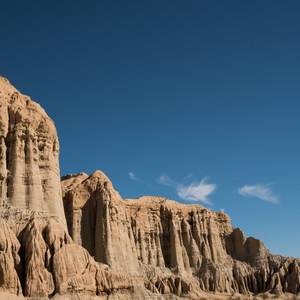The desert tortoise is a threatened species in the United States, with its population plummeting as much as 90 percent in the last 40 years. This small patch of tortoise habitat, Desert Tortoise Research Natural Area, is an oasis for this unique creature. But it's not only the animal that thrives here. Ground squirrels, several species of lizards, jackrabbits, songbirds, and snakes all call this area home.
During your visit, be sure to pick up trail brochures at the start of the interpretive loops. As you walk along the trail, numbered signposts correlate with the information in the brochures. You'll learn more about the vegetation, animals, habitat, and human impact on the desert during your hike. If you're set on seeing wildlife, visit the natural area in the springtime. Walk quietly and visit in the early morning for your best chances at seeing the tortoises out and about. During the heat of the day, most animals hunker down in the shade and well out of sight.
Springtime also means you'll likely see a variety of colorful flowers. Look for Mojave asters, lacy phacelias, blazing star, desert sage, and lupine, just to name a few. The volunteer park host, in addition to the informational signboard, can help you identify what's blooming during your visit.








Comments
Sign In and share them.